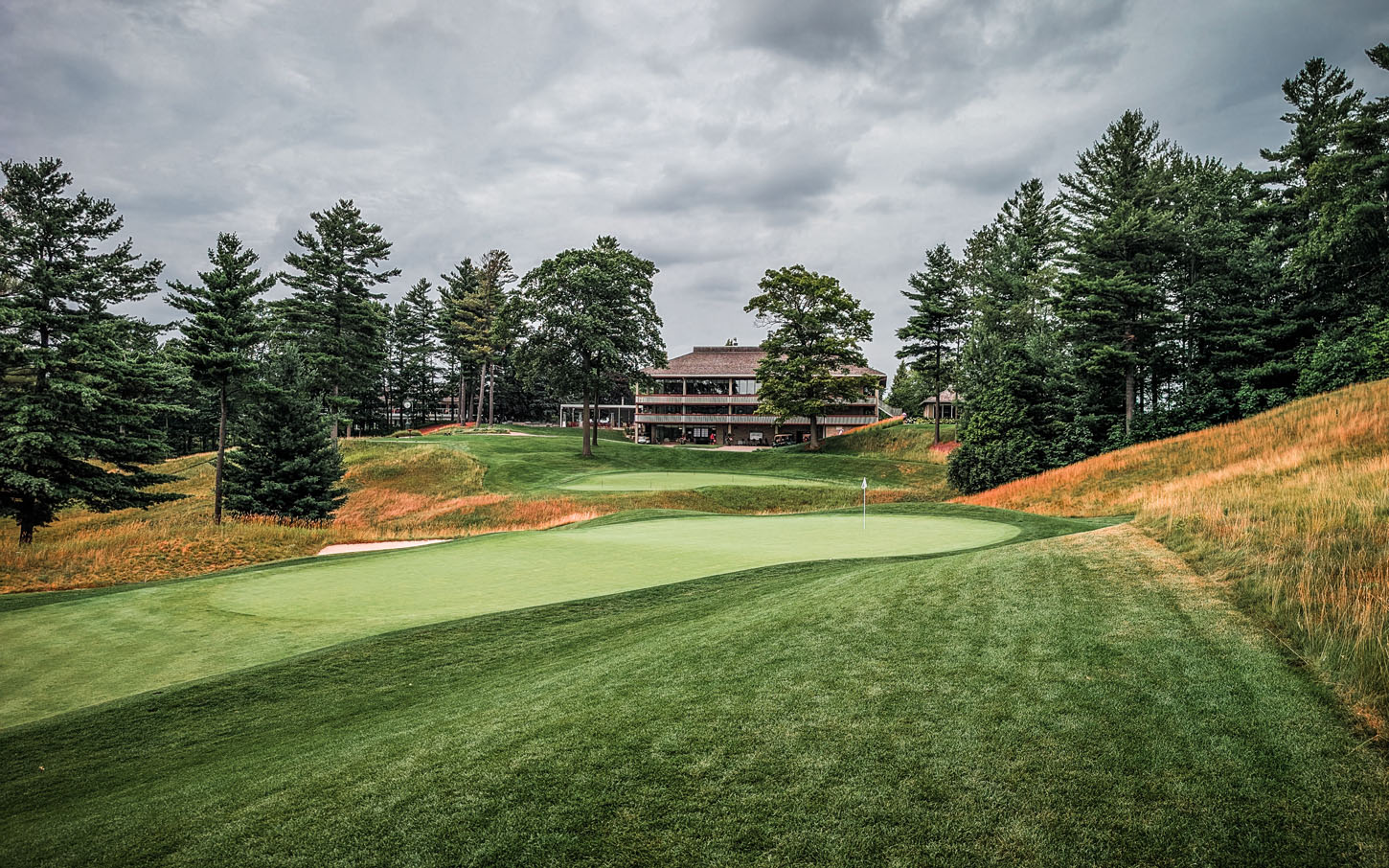
↑ Looking across the second green to the practice putting green, first tee and clubhouse behind
#1: 5 A.M.
My grandfather’s bright red GMC truck always smelled like shaving cream and aftershave. His hands lightly gripping the wheel as we turned off the empty road, through the gatehouse with a gentle nod toward the guard, and up the winding driveway to the clubhouse.
“Sei pronto?” Are you ready, he would say in our southern Italian dialect, knowing full well I always was.
Just past my 14th birthday, I’d sit up straighter as we crested the hill to the drop off. Even at that hour, Beacon Hall Golf Club had a presence. The drive up the entryway was often lined by rolling fairways sleeping under a blanket of fog. The pines swaying lightly in the predawn breeze were always a sight to behold.
“Okay, ti vedo dopo.” See you later, my grandfather would say, as he pulled away from the bag drop and into the darkness of the early morning hours, the tail lights of his truck cutting streaks through the fog as if they were shooting stars. I considered them my cue. Red may mean stop to you, but for this 14-year-old puffy-eyed boy, it meant go.
There was no shortage of questions wandering through my mind at this ungodly hour. Another day out in the big world I knew as Beacon Hall filling me with excitement. What’s going to happen today? Who will I meet? Will I get a bag? What will the weather be like? Will I get a second bag? Can I golf later? Why am I up this early?
Most kids my age were still hours from waking up. Me? I was already on the clock.
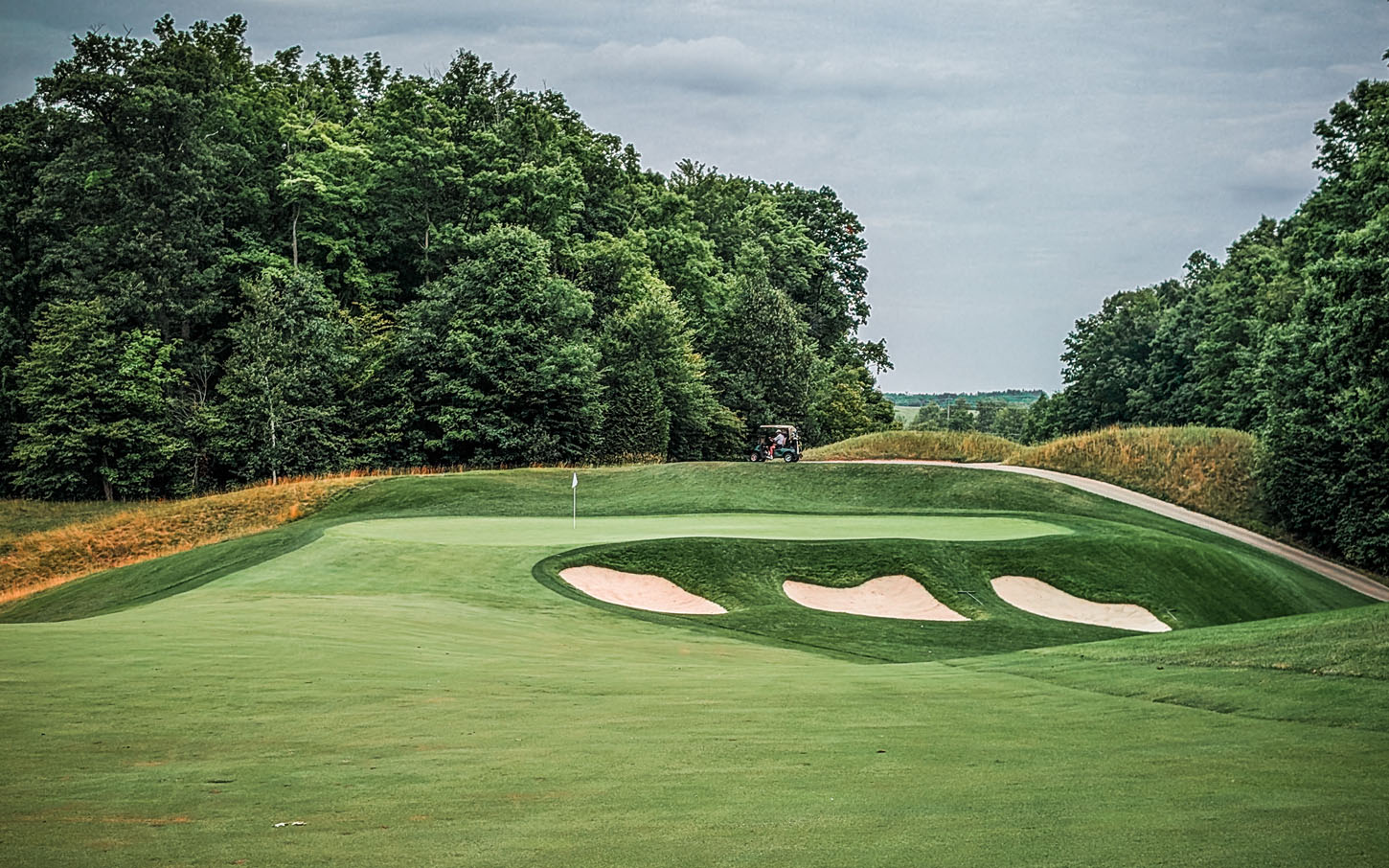
↑ The fourth green
#2: Loops And Lessons
My first loops were for the early risers. The ones who didn’t just play golf but inhabited it. CEO’s, athletes, teachers, financiers, doctors, the occasional guest whose name I wouldn’t appreciate until years later—and staff—before 8 am on a Monday,
“Is the bag too heavy?” asked one of them on my very first round. His bag was cutting into my shoulder like it was packed with cinder blocks. “Not at all, sir,” I would answer while wondering how on earth a golf bag could weigh so heavily.
For most of my loops I did more than just carry a bag. I also gained more carrying those heavy leather tour bags. Many of “my” golfers—yes, they were mine—took the time to teach me not just how to caddie, but numerous lessons I would carry with me for the rest of my life.
A lesson I will never forget came from one of the more soft-spoken members at the club. He was the type that rarely said much but simultaneously said a lot. He surprised me one day on the seventh tee when he said,“You read the game the right way.” I didn’t understand what reading the game meant. It was his response to a menial attempt I made to speak philosophically about the game, doing my best to pretend I was 14 going on 50. “Don’t lose that,” he followed.
I didn’t know then how much those simple comments would stick with me. How they would build confidence in me to never be afraid to speak. For someone who grew up particularly shy with a semi-regular stutter, they were the menthol to my cough syrup. Every loop felt like an education. Sometimes in golf, sometimes in life. I discovered people will tell you exactly who they are if you learn to listen between the lines. I learned strategy reveals itself in the way someone chooses a club or a conversation. I learned that you can find out as much about a person in silence as you can in conversation. I also learned that carrying two bags for four hours in the Ontario July heat will humble anyone, no matter how young you are.
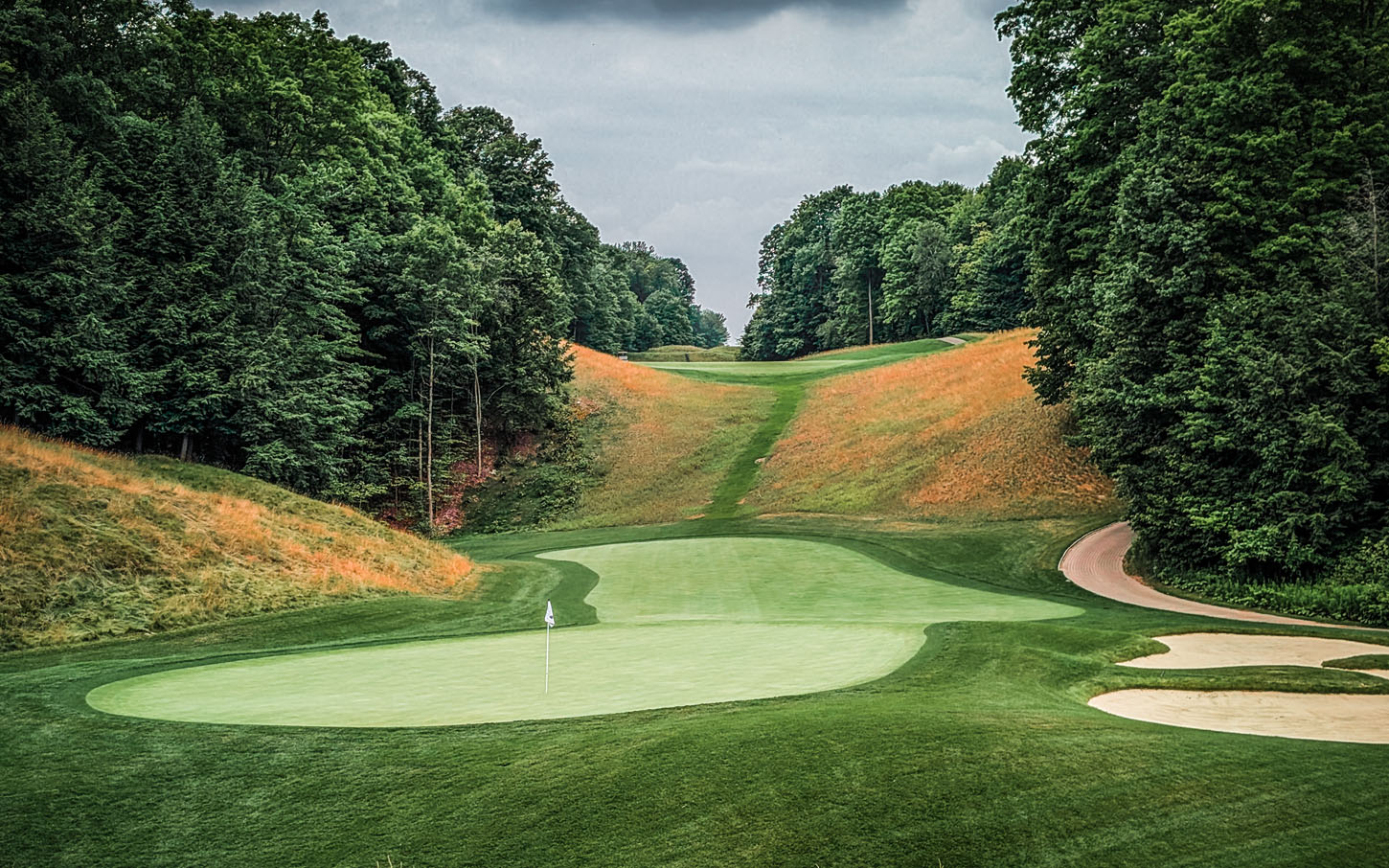
↑ From the sixth tee back to the fifth green
#3: The Architect’s Apprentice
At some point during my time at Beacon Hall, I stopped just carrying bags and started carrying questions.
Why was the par-3 14th bunkerless? Why did the second green angle that way? Why did the 11th hole have such a big bail out area right or the 15th a second fairway? What made the par-3 16th such an incredibly challenging yet satisfyingly fair hole?
One evening, the assistant pro noticed me lingering after looping twice that day. I was standing just opposite of the bag drop area, across from the pro shop behind the ninth green waiting for my grandfather to pick me up. I was sketching the hole backwards on the back of a used scorecard.
“What’s that you’re drawing?” he asked. “Just the layout of the hole,” I said. “It would be way easier to take a picture,” he replied. Another simple exchange in the life of this moldable adolescent.
That short exchange changed everything, though. Suddenly, I saw Beacon Hall differently. No longer as just a golf course, but rather as a subject waiting to be photographed. An ever-changing landscape filled with human decision-making. The largest blank canvass someone had turned into the most beautiful piece of art I had ever known.
It started to glow.
Every little thing began to make its impression on me. I realized the placement of a bunker wasn’t random. The shape of a green wasn’t chance. The location of a tee box wasn’t luck of the draw. All these things were a conversation between golf course architect and golfer.
Soon thereafter, I would begin walking the golf course at dusk with my father’s Nikon camera and a small notebook. I would jot down ideas, redraw holes in my head, and find the just right angle in the just right light to showcase the marvel that lay in front of me. That was the summer I realized I didn’t just want to play golf…I wanted to understand it.
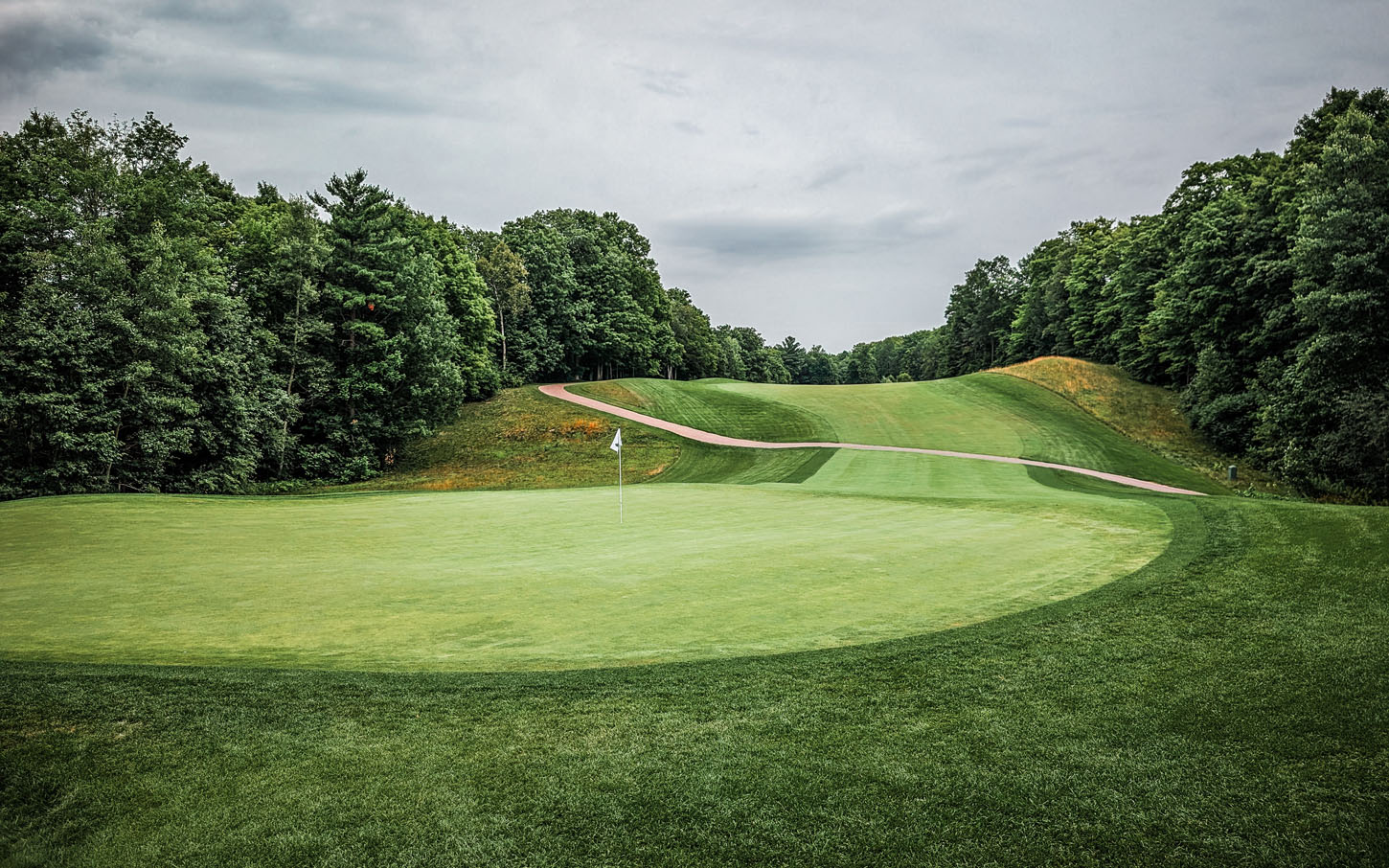
↑ From behind the ninth green
#4: The Course As A Classroom
I didn’t know it at the time, but I was growing up on one of Canada’s golf masterpieces. Beacon Hall was an education in how great design can elevate the game. I knew its name before I knew its history. For years, I had had John Gordon’s “Great Golf Courses in Canada” by my bedside, constantly wondering why the coffee table come bedside table book didn’t have better photos of Beacon Hall. Of course, at that naive age, I didn’t think there was much to read about golf courses. I had it for the photos. It wasn’t until I began caddying at Beacon Hall that I learned it was the product of two brilliant minds—Bob Cupp and Tom McBroom.
— The Hands Of Cupp & McBroom —
Bob Cupp came from a background in art and literature. He was a storyteller as much as he was a designer. You can feel that at Beacon Hall as every hole unfolds like a narrative: a beginning, a dilemma, a climax, and a resolution.
Take the par-4 sixth, for instance. It lures you into taking on the left side, trying to make the long carry for a chance to possibly reach the green. But the real test doesn’t reveal itself until you’re standing over that nervy, short approach to a green that is better taken on with more spin. Once on the green, you quickly realize there are also better parts to find yourself on depending on the pin location.
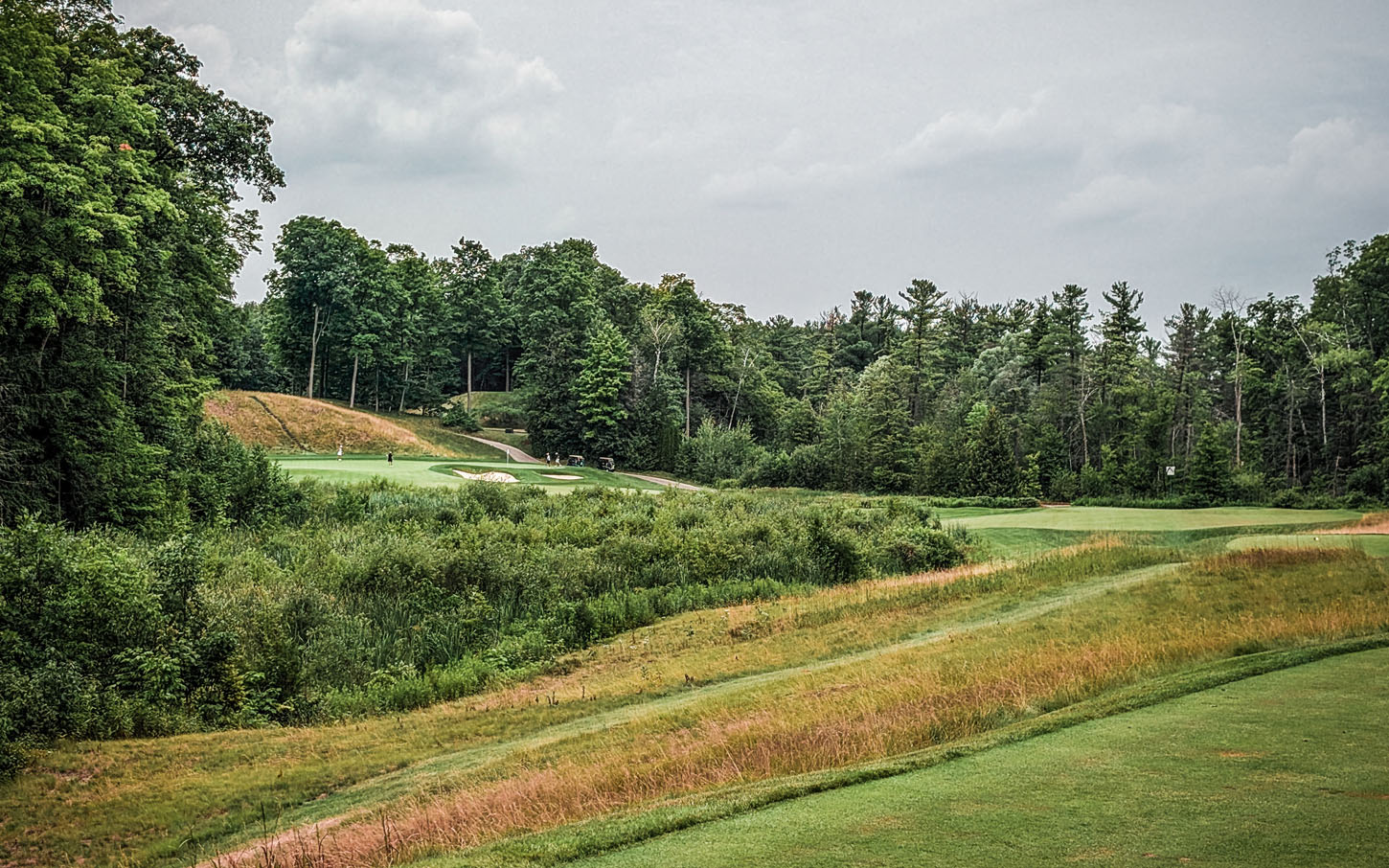
↑ The tempting sixth hole
There was also early Tom McBroom. A Canadian in golf design whose work I would come to study deeply over the following years.
McBroom’s signature is restraint. Working with the land instead of against it. Letting natural topography guide the routing. He has a particular knack for creating classic feeling golf courses with modern twists. The way Beacon Hall’s holes drape over the rolling terrain feels like it was discovered rather than constructed. There is a modern feel, but also very classic strategies. When I later read McBroom describe his design philosophy—“find the holes the land wants to give you”—it made perfect sense. Beacon Hall is exactly that.
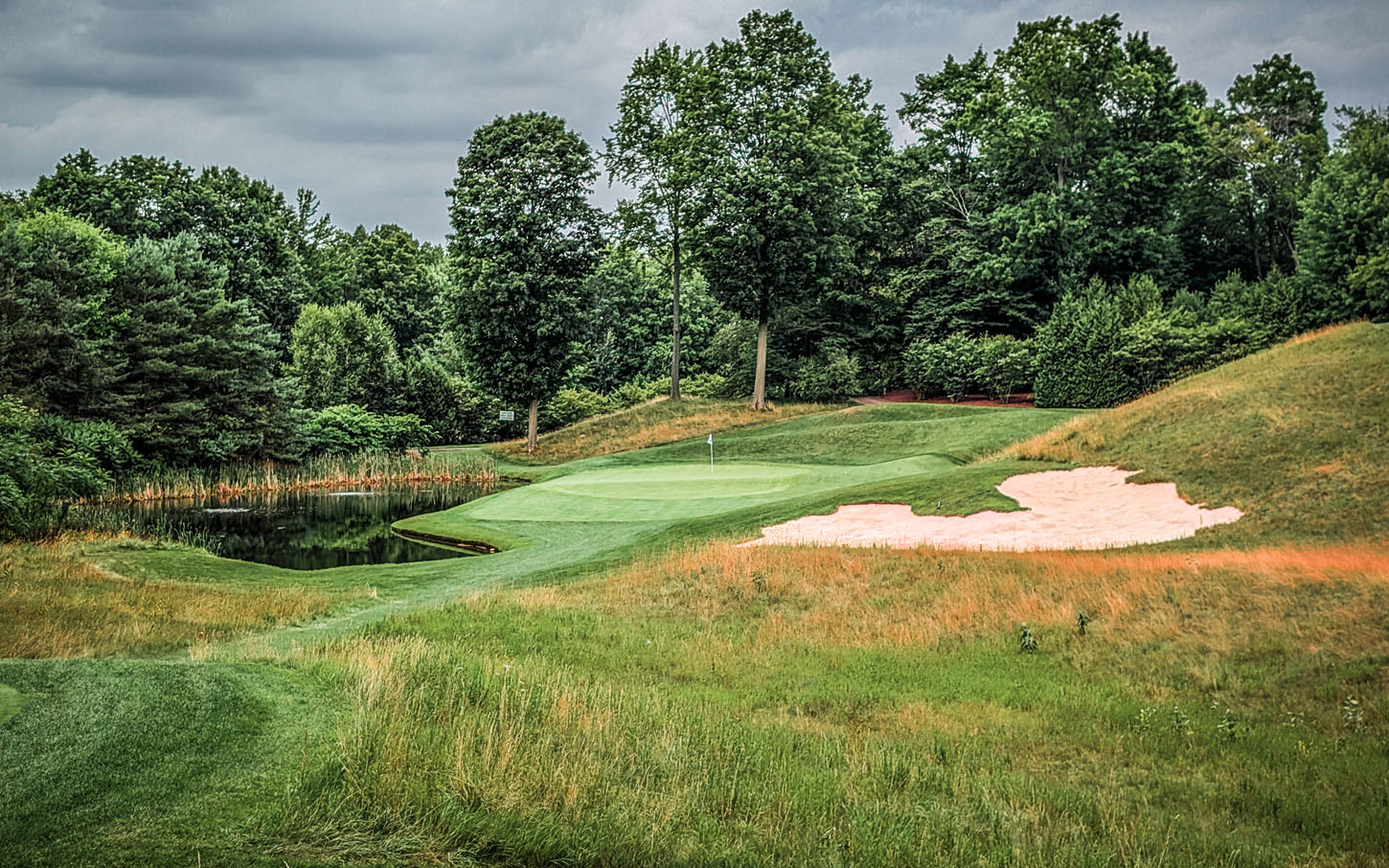
↑ The par-3 eighth hole
— Studying The Holes —
I began dissecting holes with a camera lens the way some kids would memorize video game cheat codes or song lyrics.
The par-4 second taught me about visual deception. From the tee, the right bunkers dominate your view making the left side seem like the best line of play. But that’s the side that gives golfers the most difficult terrain to carry into the green. I learned that the best architects play with visual perception, making you think about shots in three dimensions.
The par-5 12th showed me the magic of a risk/reward hole. It’s reachable in two for the bold, but only if you hug the dangerous left side off the tee. Bail out right, and the hole stretches into a three-shot grinder. That kind of choice—tempting you into courage but punishing you for recklessness—is classic.
The long par-5 fourth is a hole that taught me to plan my shots. It is wide, really, but the two fairway bunkers at about 150-yards require well-navigated layups to proper yardages in order to set up a favourable angle to the narrow green. I started to appreciate that a hole’s brilliance isn’t in its yardage, but in the questions it asks of you.
The more I studied Beacon Hall, the more I came to appreciate Cupp and McBroom’s philosophies.
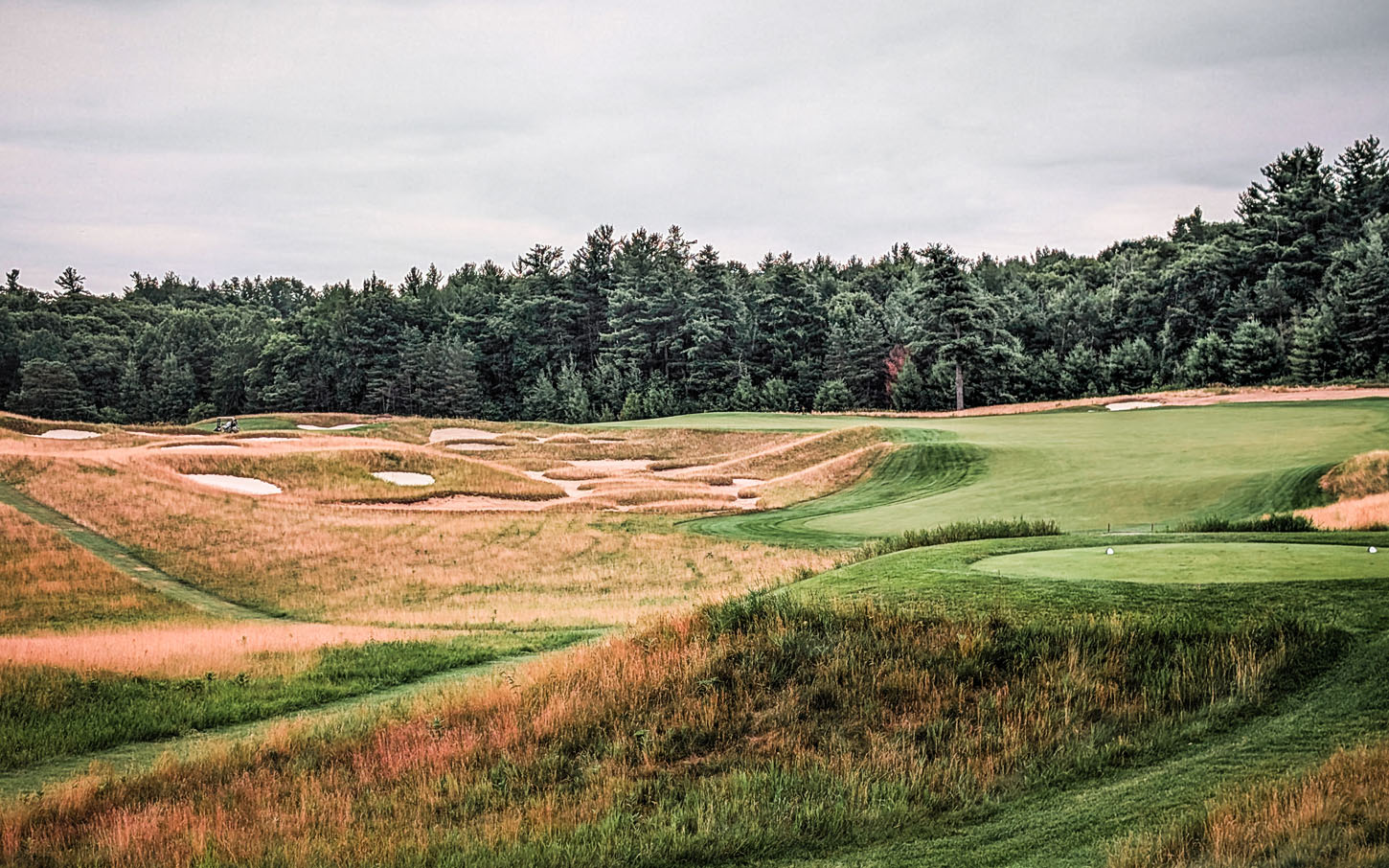
↑ The par-5 15th with its second fairway near blind save for a golf cart in the distance
Cupp, who worked under Jack Nicklaus before establishing his own voice, once said that his goal was to create “golf holes that are memorable, playable, and soulful.” I think about the word soulful often. Especially at Beacon Hall where its contrasting parkland/Carolina style outward nine and its links-inspired back nine have all the soul you could ever ask for.
— Learning To See —
When you spend that much time on a golf course like Beacon Hall, carrying bags, walking every angle, watching players make decisions, it gets into your veins. In the pictures I would take, I started imagining alternate routings, expanding greens in my mind’s eye to create new pin positions. I was no longer just a caddie or a kid carrying a bag, I was an unknown apprentice to two architects I’d never met, learning to appreciate their craft by walking their work.
Beacon Hall also inspired me to travel. It inspired me to see. I wanted to see more than the “Great Golf Courses of Canada” by John Gordon. I wanted to see the great golf courses of the world by whomever designed them. And so, over the years, I travelled and saw. I saw the Old Course and Fishers Island. Crystal Downs and Royal Dornoch. I discovered Pinehurst No. 2, Pacific Dunes, and many golf courses in between. Throughout seeing all of them—and more than 25 years passed—I would come to realize I’d already seen one of the all-time greats right at home. Bob Cupp and Tom McBroom gave me my first great golf course experience. Lessons in strategy, aesthetics, and restraint.
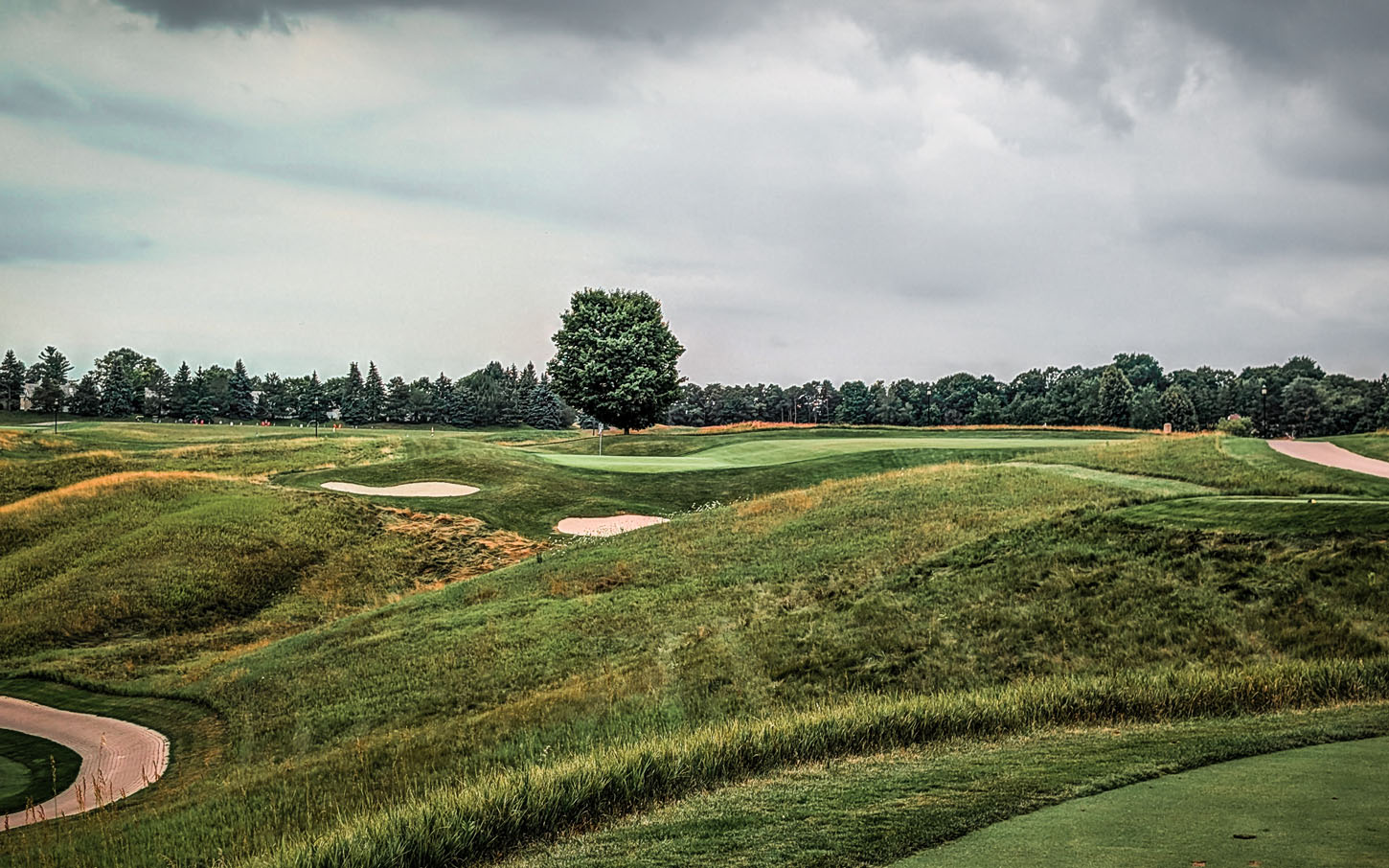
↑ The large bail out area right of the 11th green
#5: Through The Lens
Photography came by accident. I thought my father’s camera was a toy. I’d go through film rolls like meat in a deli. I know better now.
Through a camera I learned that the same bunker that looked plain at noon came alive when the sun dipped low, shadows stretching like fingers across the fairway. I learned how fog transformed a par-3 into something ethereal. I also learned patience while waiting for the light, for the right moment, for the course to show me its best looks.
Through the lens, Beacon Hall wasn’t where I worked, it was where I became inspired.
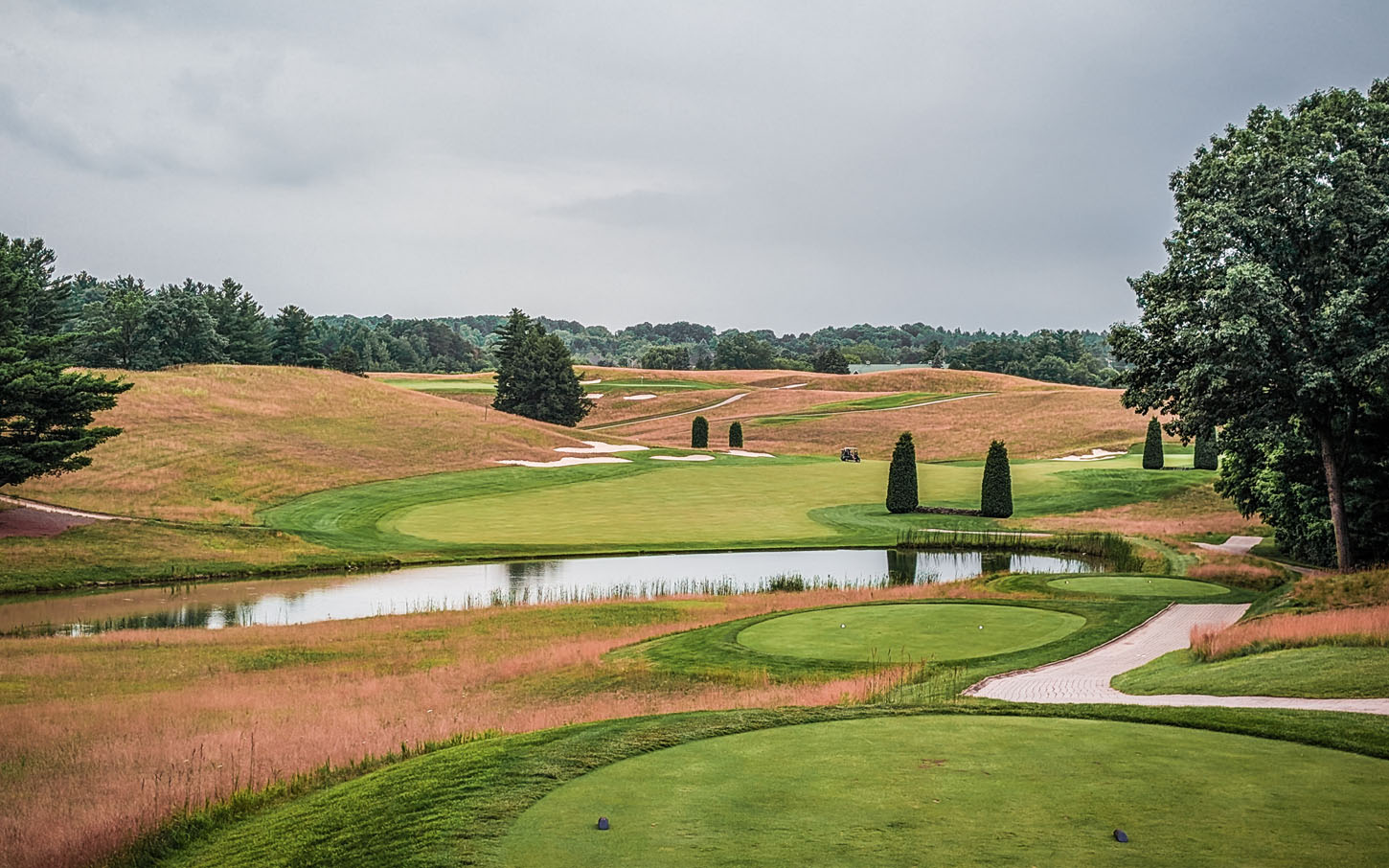
↑ The stunning tee shot at the par-4 13th
#6: Becoming
Looking back, I realize Beacon Hall was where I learned who I was.
It taught me discipline — Waking before dawn, raking bunkers I hadn’t hit out of before most of my friends even rolled out of bed.
It taught me respect — For the game. For the land. For the people who entrusted me with their days.
It taught me to see — Not just the architecture of a golf course, but the quiet beauty in everyone and everything.
I think about those days regularly. The peace and calm of riding safely and slowly alongside my grandfather in his truck to my classroom. To my inspiration. I’ve always wondered if my grandfather knew that every ride to Beacon Hall was a launch pad to the person I was slowly becoming.
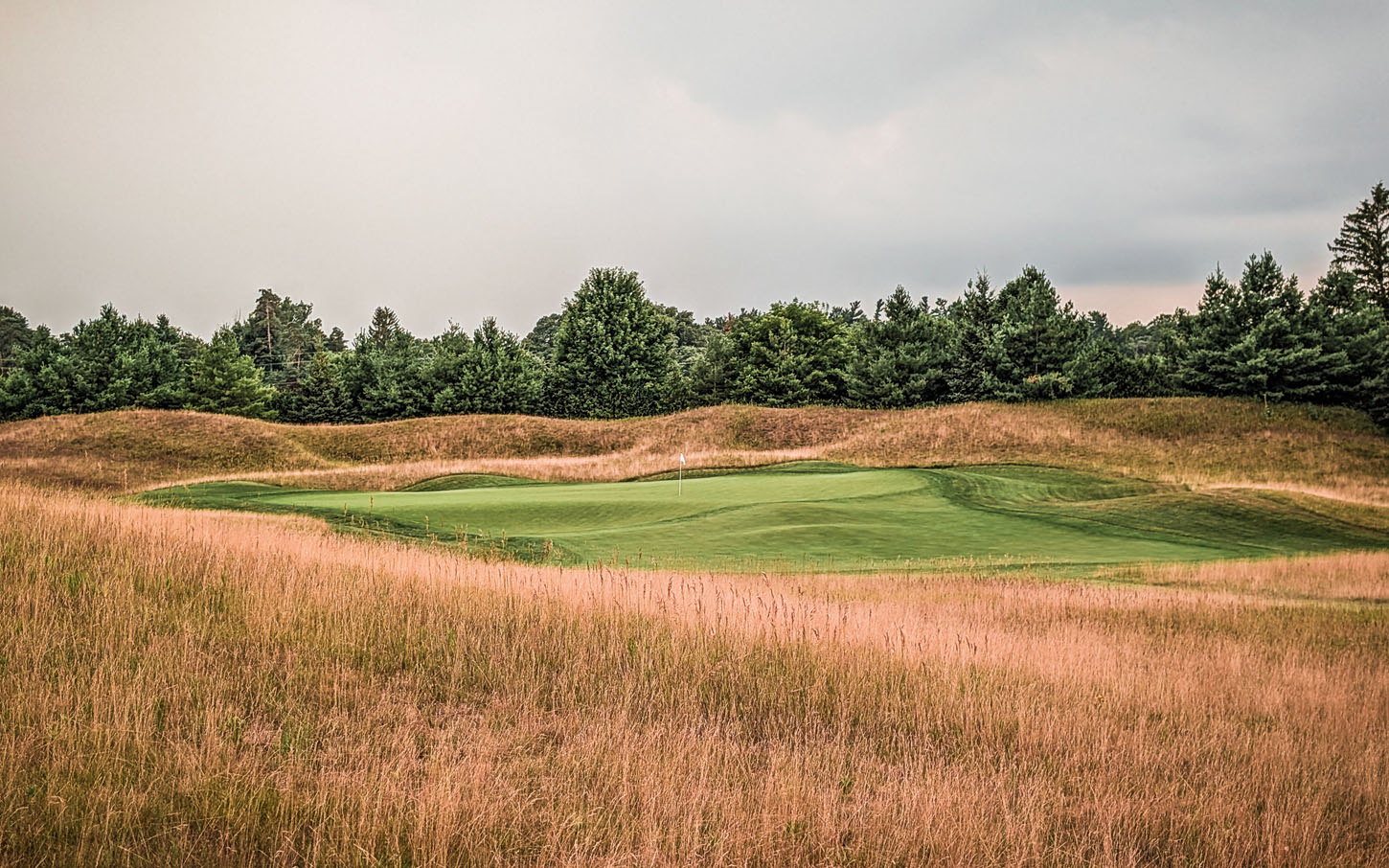
↑ The bunkerless par-3 14th with a large false front
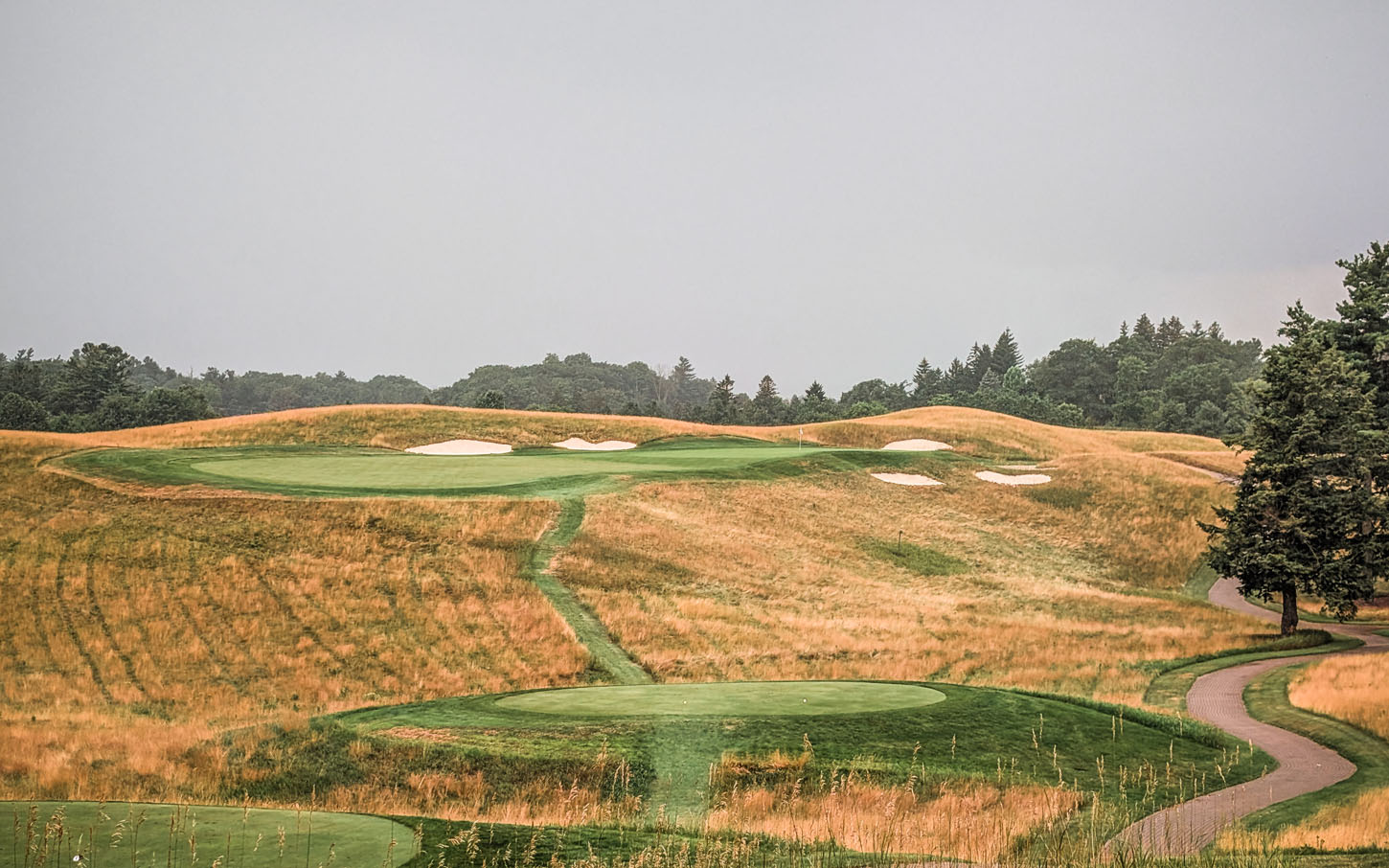
↑ One of the worlds best par-3s at the 16th
#7: Full Circle
Recently, and decades later, I was fortunate to drive down that same empty road, through the gatehouse with a gentle nod toward the guard, and up the winding driveway to the clubhouse once again. This time, I was in my own truck. A white Ford F-150. And I was in the drivers seat instead of my grandfather lightly gripping the wheel. The trees seemed a little taller. The clubhouse a little smaller. But the feeling—the one I’d carried since I was a kid—it remained.
I parked my truck, grabbed my camera that fits so conveniently in my front pant pocket, and stepped out into that familiar air.
I wandered the course quietly, stopping in some of the same spots I used stop to take photos as a teenager. I framed photos of bunkers I once raked, greens I once putted, sightlines I once studied. This time, it was less about art and discovery and more just something I needed to get out of the way.
I was rained out of the last three holes, but I still made my way around the last few, taking in the sights, thinking back to the countless rounds I walked these fairways with everyone’s clubs but my own. I wondered where some of those members and some of those guests might be. Are they still around? Alive? Playing golf? I wondered if any others had been lucky to learn what I learned from them in those fleeting moments we spent together for five of the most formative years of my life.
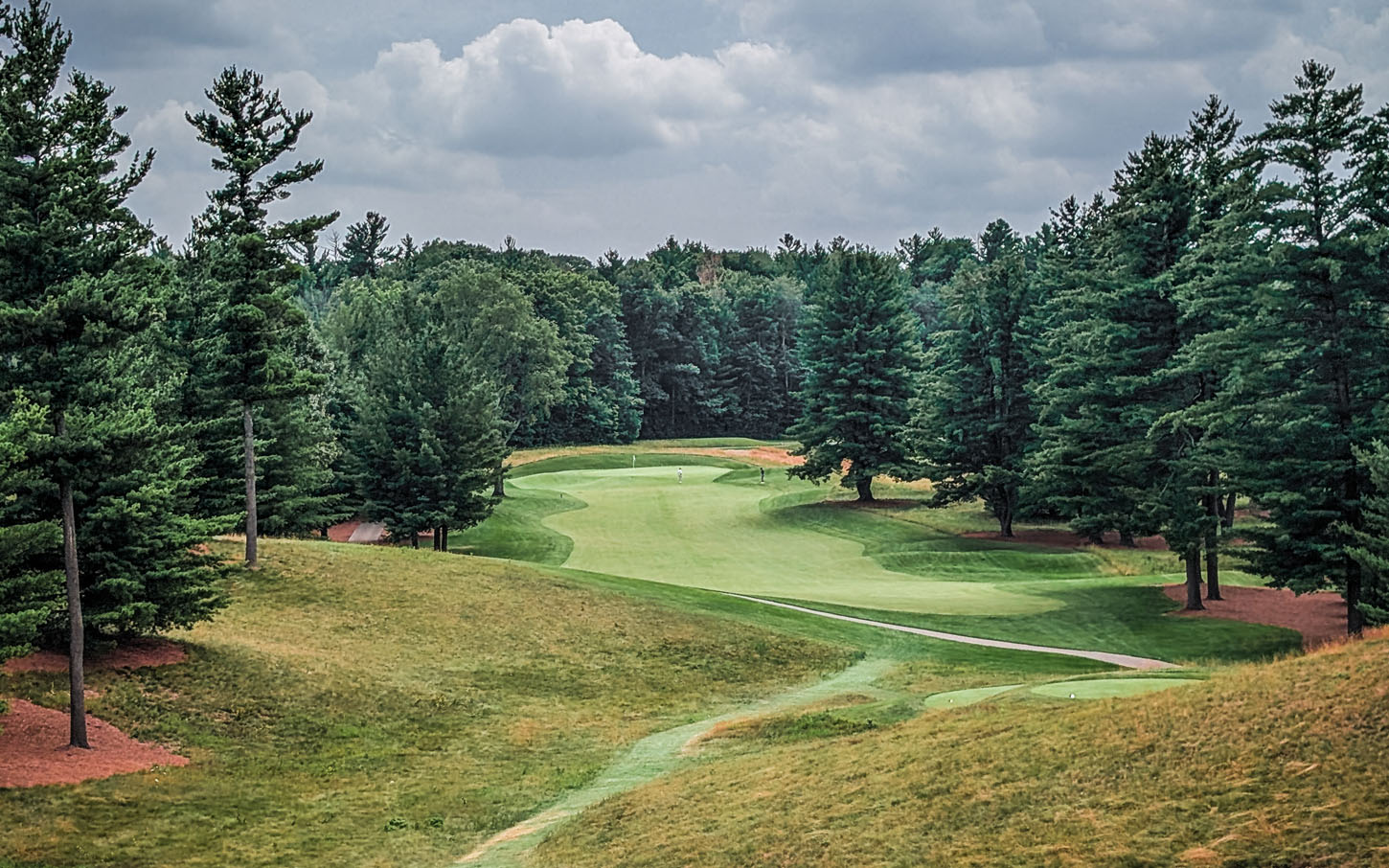
↑ The stellar opening hole
Beacon Hall was where I grew up. Where I learned to work, to dream, and to see. It gave me my love for the game, for golf course architecture, for photography, and for the quiet beauty of a place built with purpose. It gave me moments that I carry with me forever.
Behind the 18th green, I caught myself looking up toward the bag drop area. It was easier to see now that some of the trees are no longer. Up top of the hill, I could see a bright red truck pulling up, my grandfather in the driver’s seat. I could hear him saying “ti vedo dopo.” I’ll see you later. Then driving away.
To Beacon Hall. To all the members. Guests. Friends. Acquaintances. To my Nonno.
I will see you later. “Ti vedo dopo.”
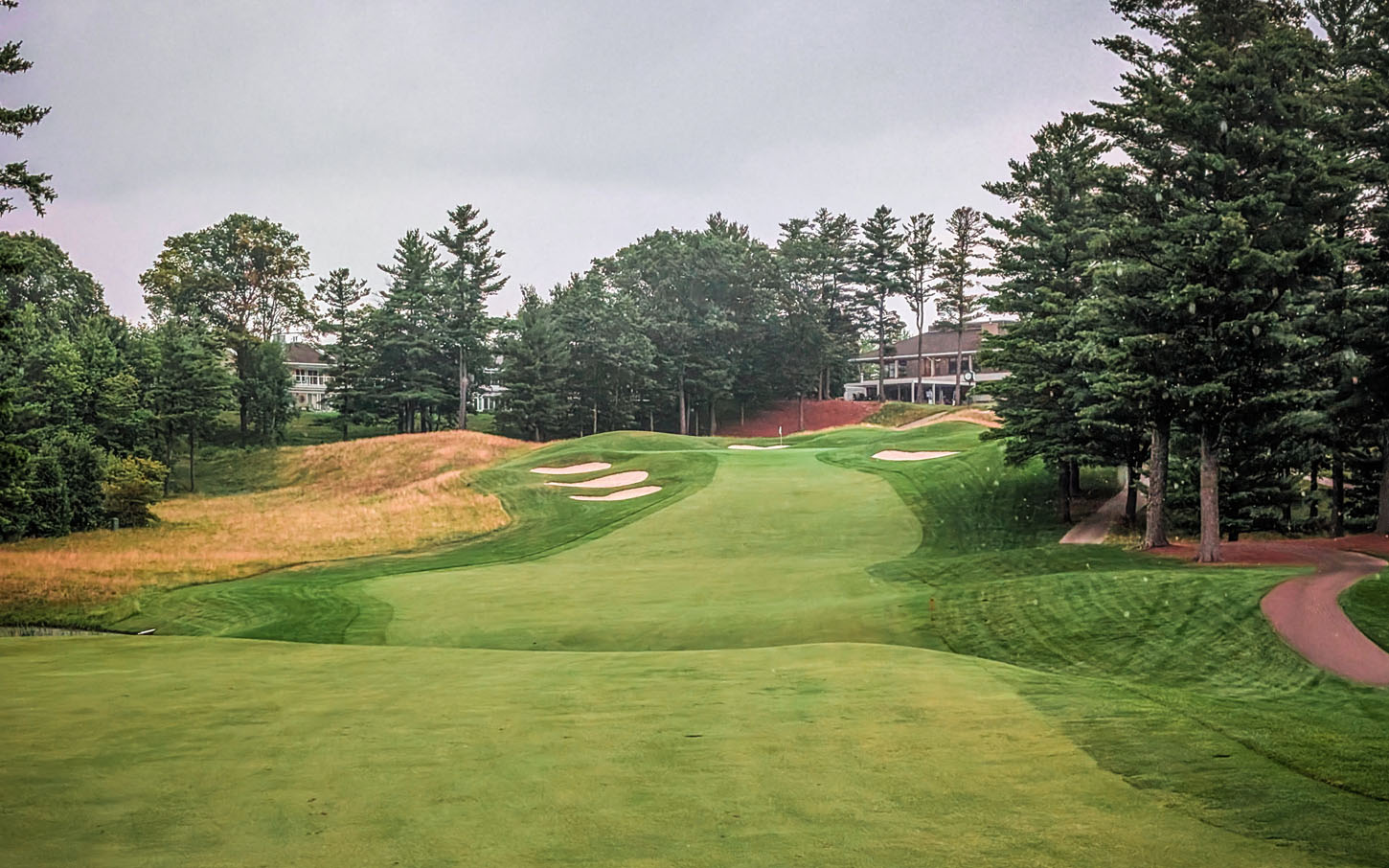
↑ Coming up the 18th in the rain
